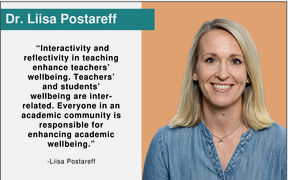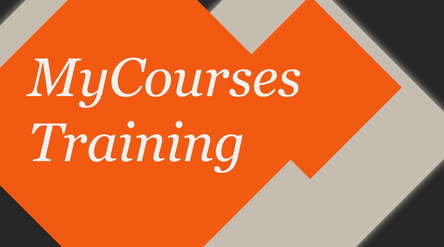Curriculum mapping
The curriculum mapping method supports the planning of aligned teaching.

According to several studies, the wellbeing of the teacher and the students are inextricably linked. Teaching and learning are not separate things - rarely one exists without the other. The essence of working as a teacher is about daily encounters with students and other teachers. A teacher's wellbeing has effects on the quality of the teachers' work as well as support to student wellbeing. And vice versa. Teaching, where students feel like they are part of it and the dialog is open and two-way, can support the wellbeing of students.
An individual who is doing well, is better able to regulate stress, and more likely able to recognize their own values and ways of thinking. They are also likely to take action in these issues, and hence support the wellbeing of their social environment. In teaching, this happens, e.g., through positive incentives, empowering students and through supporting experimentation and participation.
Instead of consentrating on suppporting individual wellbeing only, we need to think of community wellbeing. Multidimensional understading of wellbeing enables different lifestyles, empowers and supports agency. When social and structural challenges are solved in the community, they do not become individual challenges.
The Wellbeing in Teaching Toolbox is produced by Aalto Oasis of Radical Wellbeing, Aalto HR and Aalto Learning Services.
Available through Aalto login. English with subtitles.


The curriculum mapping method supports the planning of aligned teaching.

How to get started with experimenting and creating new forms of teaching and learning?
The annually conducted AllWell? student survey gives us research-based data for planning pedagogical development. A summary of AllWell? results are distributed to Aalto programme directors and school management.

The aim of curriculum design is a programme that helps students acquire the competence they will need in their field in the future and to acquire it within the target time frame. In this page, we have described the stages of curriculum development and instructions for each stage. You can find also tools and working templates to carry out each stage.



